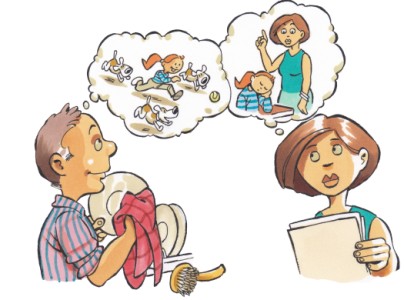“Yeah, Abby. She just doesn’t seem that interested. I find it so hard to keep her focused!” Today I am talking to Anne, Abby’s teacher. I regularly hear teachers make these kinds of comments. They usually know an ‘Abby’, who does not do very well and has júst managed to get promoted to the next grade. Teachers see these students’ minds regularly drifting and they often stare into the distance, and slouch quite a lot.
Anne continues: “And she is perfectly capable of focussing. I saw that in the garden project. Abby was super-enthusiastic and paid close attention when everything was explained about planting the vegetable garden. She was actively involved and was able to answer questions well. In class she was never as… uhm, yes… awake. So, if she can do it there, why not in the classroom?”
I explain to Anne that it is very well possible that Abby is underresponsive. That means that not enough sensory input makes it through to her awareness. The description that she does not seem fully ‘awake’ is quite appropriate in this case. Because if Abby does not experience enough sounds, movement, images and other input, her brain is not responding to this input and therefore is not active. If Abby is underresponsive, she needs more sensory input than average to become and stay alert and active. During the garden project, the students had to move, feel and talk a lot. Abby therefore received more input than she gets in class. And that works for her.
You can test this. If you see that Abby can also pay more attention and participate after playtime and after PE-class, just like at times when it is noisier, then it follows that Floor can pay much better attention when there is more sensory input. And you’ll probably notice that she can’t stay focussed when it’s quiet around her.
When I explain this, Anne straightens up. “Yes, that’s right! Her parents do not understand what I tell them about Abby, they do not recognize their daughter in my description. They say that Abby is an active girl at home, who helps her mother in the garden and likes to be in the kitchen with her father. And she is always busy with their dogs. We were wondering: ‘How can she be so different at home?‘ And now I understand. Abby moves a lot at home, for example on the trampoline in the garden and they have three dogs. She will me about how chaotic it sometimes becomes, and she seems to love it. And I know Abby plays outside a lot.”
In class you can ensure that Abby also gets the input she needs, I explain to Anne. She can do some tasks standing up, at a higher table. She can do chores that allow her to move, such as handing out teaching materials. And she will love being able to run up and down the stairs for a while. After that, she’ll be able to focus quite well!
Postscript: In education it is well known that there are students who get overwhelmed from some sensory input, such as noises, while they should be concentrating on their work. These students are overresponsive. You see quiet workplaces in more and more classes, because of this. It is much less known that many students are underresponsive and that those students can be slow and sluggish (they do not receive enough sensory input) or véry mobile (they are looking for more input). Both are discussed in the book “Sensory solutions in the classroom”. In addition to explanations, the book gives a lot of tips & strategies to ensure that students can better focus.



